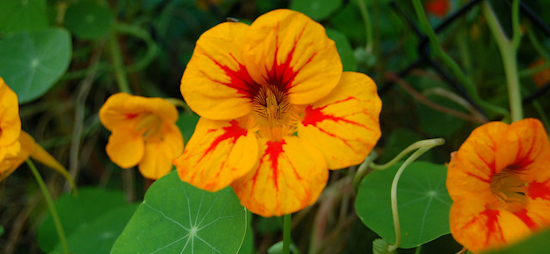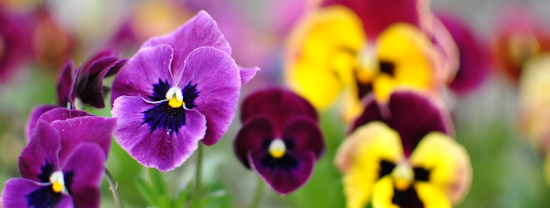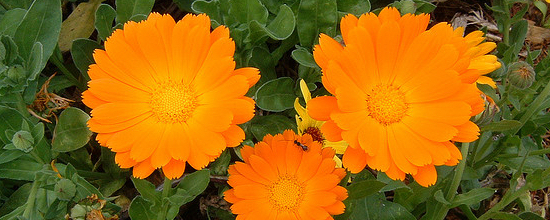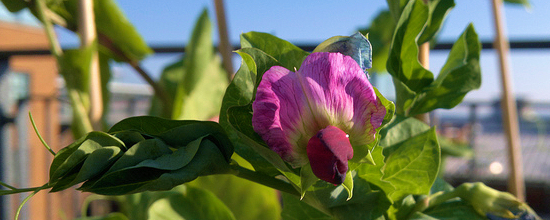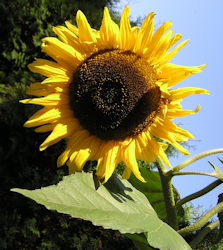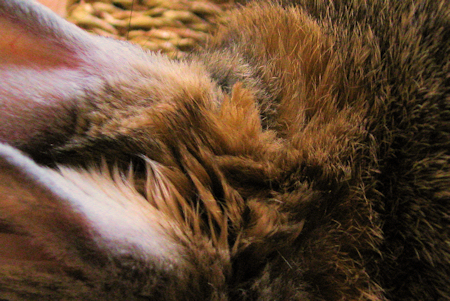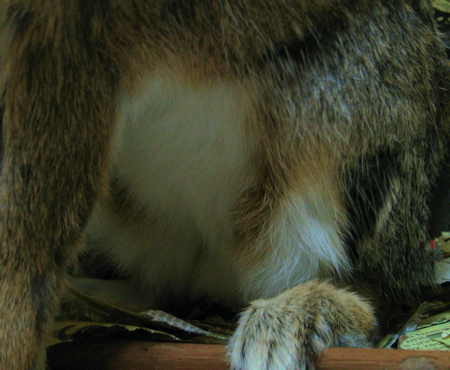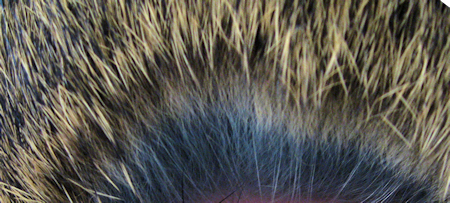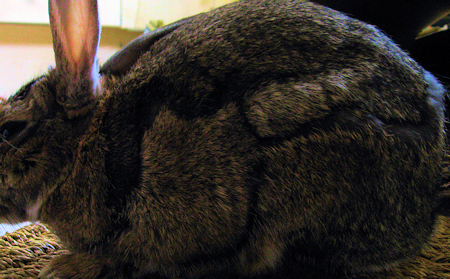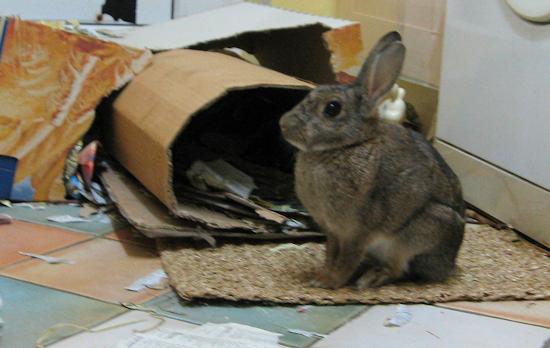The Stick Monster (New Bunny Toy Idea)
March 24th, 2012At last, some sunny days! I’ve been clearing up in the garden cutting things back and pulling out weeds (why are they always the first thing up) and sowing loads of seeds. Another thing I’ve been doing is harvesting a supply of chew sticks for Scamp to eat in the hope that a ready supply of sticks to chew will mean less chewing of other things like walls, doors, and skirting boards. Not that it will stop him, but just think how much more he’d chew if he didn’t have sticks too.
Chew sticks are a bit expensive to buy and, according to Scamp, just not as tasty as the fresh stuff so growing your own is a great way to keep a ready supply. Don’t these look good enough to eat?
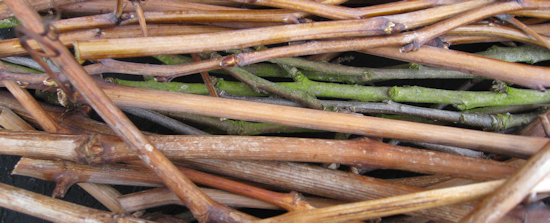
Home grown apple, grape and raspberry chew sticks
These are…
- Apple – Apple trees come in different sizes, unless you’ve got a giant garden go for a dwarf tree that will stay about 6′ (with pruning), you can even grow apple trees in big containers but that will limit their grow quite a bit so don’t expect as many twigs to cut. The down side is it will probably take a year or two for your tree to get established and produce more than a handful of twigs. Apple trees are quite common and easy for non green-fingered folks to identify so if you don’t have space for a tree yourself, ask around – I bet someone you know has one.
- Grape – These grow like crazy which means loads of sticks, you can grow them in a pot against a wall, fence or over an arch. I cut them fresh when they start poking at people walking fast and there is still plenty left to turn woody in autumn.
- Raspberry – I love raspberries! So I get the fruit and Scamp gets the leaves during summer and the sticks in spring. I picked a thornless variety so in late winter/spring, I just cut the whole lot to the ground which gives me three or four 4′ long sticks per plant. That’s from raspberries grown in a tub – you’d get even more if you’ve room to give them space in the ground. More on raspberries here.
Our hazel is almost big enough we might be able to prune it next winter and have another flavour of chew stick – I think you have to dry hazel first?
What to do with Chew Sticks
I noticed that chew sticks can be a bit hit and miss with bunnies. A stick on the floor is often considered just part of the landscape and given about as much attention as a human would give a twig on a woodland walk. Partly, I think, because shop brought chew sticks are old dry wood and therefore less tasty and partly because a stick on the floor is just part of the décor.
So, I decided to have a little fun. Introducing the stick monster:
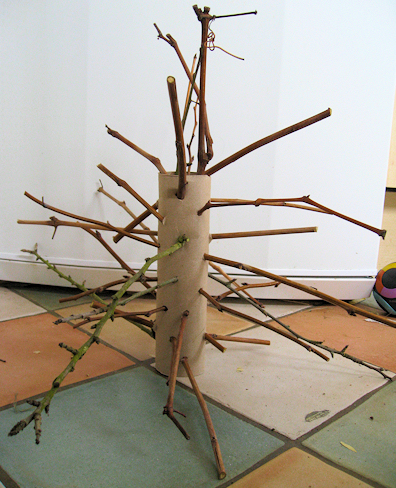
Here are the steps to make your own…
1. Gather a selection of edible sticks and have them approved by a handsome assistant.
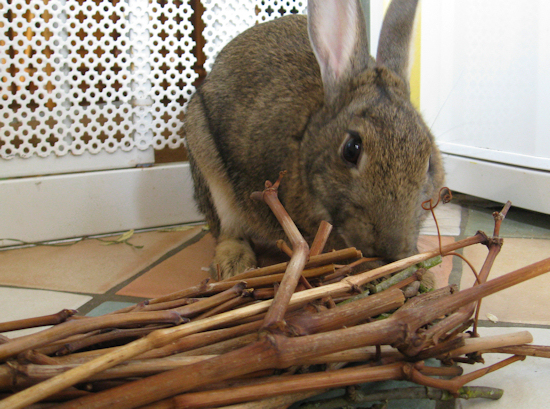
1b. Remove sticks from handsome assistants mouth
2. Jab a kitchen roll tube with a handy pair of scissors, whilst being careful to avoid rabbit trying to jump on your lap.
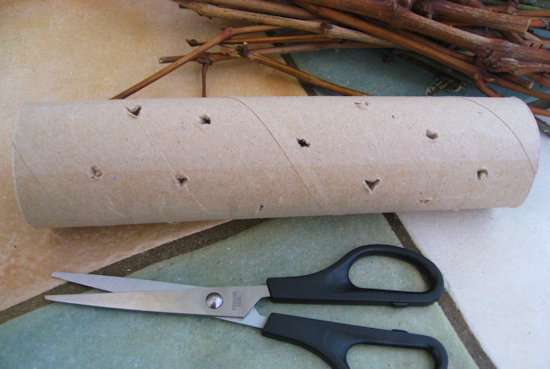
3. Post sticks through holes. Some sticks I pushed through one hole and out another, others just in one hole and I garnished the top with a few spares.
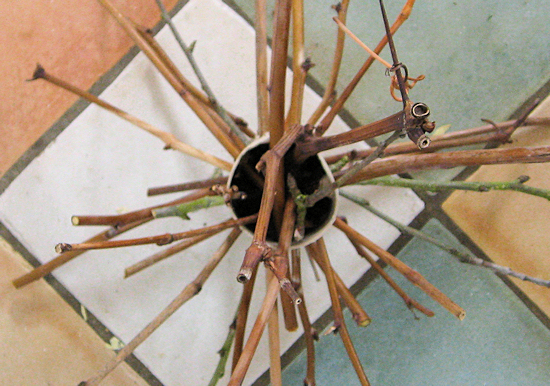
Then hand to bunny for testing…
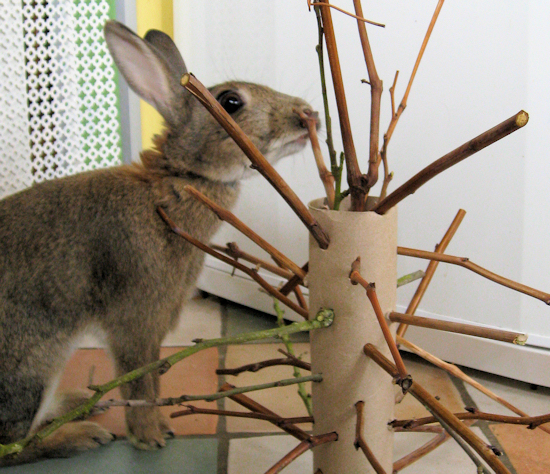
I think this would work great hung up or even part wedged in a tunnel so a bun can chew through “roots” (encouraging natural behaviour). Scamp’s is presently wedged by the cupboard he’s got him eye on extending into.

